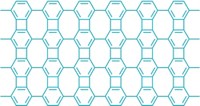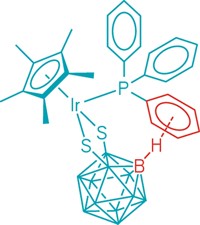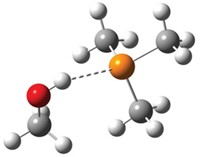Advertisement
Grab your lab coat. Let's get started
Welcome!
Welcome!
Create an account below to get 6 C&EN articles per month, receive newsletters and more - all free.
It seems this is your first time logging in online. Please enter the following information to continue.
As an ACS member you automatically get access to this site. All we need is few more details to create your reading experience.
Not you? Sign in with a different account.
Not you? Sign in with a different account.
ERROR 1
ERROR 1
ERROR 2
ERROR 2
ERROR 2
ERROR 2
ERROR 2
Password and Confirm password must match.
If you have an ACS member number, please enter it here so we can link this account to your membership. (optional)
ERROR 2
ACS values your privacy. By submitting your information, you are gaining access to C&EN and subscribing to our weekly newsletter. We use the information you provide to make your reading experience better, and we will never sell your data to third party members.
Environment
Science Concentrates
July 11, 2005
| A version of this story appeared in
Volume 83, Issue 28
Two fluorinated fullerene derivatives with a long-sought 58-carbon cage structure have been produced in milligram quantities (Science 2005, 309, 278). A low-strain framework of pentagonal carbon rings surrounded by hexagons stabilizes C60 and its larger cousins. But in smaller fullerenes--which are expected to have unusual electronic, magnetic, and mechanical properties--the pentagon rings butt up against one another, resulting in strained, highly curved cages that are labile and difficult to prepare. A team led by Roger Taylor of Sussex University, in England, has now shown that fluorination of C60 at 550 °C yields milligram quantities of two C58 fullerene derivatives: C58F18 and C58F17CF3, both of which contain a seven-membered ring (shown). Taylor suggests that the strain that has hindered previous attempts to prepare smaller fullerenes is mitigated because fluorine addition changes the hybridization of some of the pentagon carbons from sp2 to sp3. Carbon loss from C60 occurs "via sequential fluorine addition to a CC bond and an adjacent C5C bond, followed by loss of a :CF2 carbene," he adds.
If you'd like to improve the specificity of polymerase chain reaction (PCR) for amplifying a particular DNA, just add a few gold nanoparticles to the reaction mixture. PCR is the premier technique for amplifying DNA for research, diagnostic, and forensic applications. But it can be error-prone, generating nonspecific products. Zhizhou Zhang, Chunhai Fan, Jun Hu, and coworkers at Shanghai Jiao Tong University and the Shanghai Institute of Applied Physics (Chinese Academy of Sciences) now find that commercially available gold nanoparticles can be used to greatly enhance PCR specificity (Angew. Chem. Int. Ed., published online June 8, dx.doi.org/10.1002/anie.200500403). The effect seems to be related to the nanoparticles' tendency to bind more tightly to single-stranded than to double-stranded DNA, but the mechanism of the enhancement hasn't been determined conclusively yet. Other substances, such as the single-stranded DNA binding protein SSB, are known to enhance PCR specificity, but the gold nanoparticles' effect exceeds that of SSB.

The enormous wildfires that burned millions of acres in Alaska and the Canadian Yukon during the 2004 summer also generated huge plumes of carbon monoxide and other pollutants and affected large areas of the Northern Hemisphere with higher ground-level ozone levels, a new study shows. A team of researchers led by Gabriele Pfister at the National Center for Atmospheric Research, Boulder, Colo., quantified the air pollution from the wildfires by using a novel combination of modeling and data analysis techniques (Geophys. Res. Lett. 2005, 32, L11809). They estimated that the wildfires generated more than 30 million tons of carbon monoxide, an amount roughly equivalent to man-made CO emissions in the continental U.S. over the same time period. The researchers also concluded that the wildfire emissions, which include ozone precursors such as NOx and volatile organic compounds, may have raised ground-level ozone concentrations by as much as 25% in the fires' vicinity and 10% over Europe. The extent of the wildfires' effects, Pfister says, underscores the idea that "pollution does not care about frontiers."
The first superconducting transistors based on semiconductor nanowires have been prepared by researchers in the Netherlands (Science 2005, 309, 272). Scientists have spent decades trying to integrate semiconductors and superconductors with the goal of creating a new generation of hybrid electronic devices. The properties of most semiconductors, however, make it difficult to combine these materials. A team from the Delft University of Technology and Philips Research Laboratories found that they could sidestep a common barrier to this integration by using indium arsenide semiconductor nanowires. Leo P. Kouwenhoven, Yong-Joo Doh, Jorden A. van Dam, and coworkers connected these wires to aluminum-based semiconductor electrodes. Below 1 K, the nanowires enable a supercurrent to flow from one superconducting contact to another without any resistance. The wires acquire their superconducting abilities through a proximity effect, in which electrons leak from the superconductor into the semiconductor, according to the researchers.
New evidence confirms the long-held suspicion that methyl groups attached to boron atoms in carborane cage compounds exert an electron-withdrawing effect, rather than the electron-donating effect commonly associated with methyl substituents. Understanding these unusual electronic interactions should help chemists to better adapt carboranes as ligands and as noncoordinating anions, according to Francesc Teixidor and Clara Viñas of the Barcelona Institute of Materials Science, in Spain, and their coworkers. The team predicted the electron density for each atom in different carboranes, then carried out an experimental study on 3,6-(CH3)2-1,2-C2B10H10 to discern the sequence of methylation of the boron atoms (J. Am. Chem. Soc. 2005, 127, 10158). The researchers found that positive charge builds up on the carborane cage as the number of methyl groups increases, eventually preventing full methylation of the carborane. Boron atoms in the 9- and 12-positions farthest from the cage carbon atoms accumulate the highest positive charge and become subject to nucleophilic attack by halogen ions, which offsets the charge and stabilizes the molecule (shown, B is pink; C, gray; H, white; Cl, green; I, purple).





Join the conversation
Contact the reporter
Submit a Letter to the Editor for publication
Engage with us on Twitter